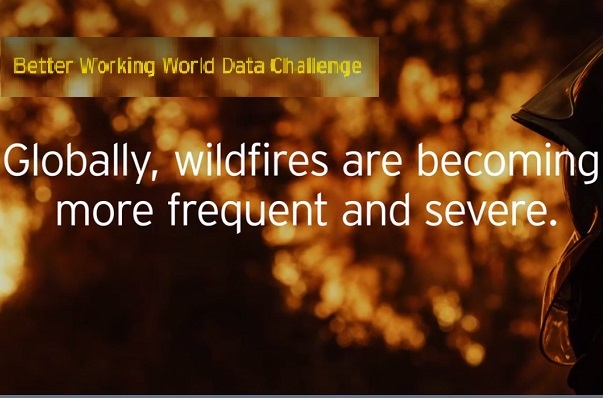
CFA’s bushfire experts have welcomed innovative new models for detecting, mapping and predicting the behaviour of bushfires produced through a global science challenge as a step in the right direction.
The 2021 Better Working World Data Challenge, facilitated by EY and Microsoft, drew more than 8,700 registrations from some of the world’s brightest young minds from more than 115 countries.
The top 60 global finalists were invited to present a video with their findings, methodologies and assumptions, before the winners were announced this month.
Team Firefighters Scientist, from France, won Challenge 1 ‘Fire mapping’, adapted ‘image segmentation’ looking at biomedical images to this problem for mapping fire boundaries.
Brian Killough from NASA Langley Research Centre said their solution had results that were more than 90 per cent effective.
“They took data that looked at fires and they tested against that fire to create a model and then they applied that model to other scenes with unknown fire boundaries and they were able to match the correct boundaries at well above 90 per cent and that’s outstanding. That’s what we normally try to achieve when doing machine learning,” he said.
CFA Deputy Chief officer Bushfire Alen Slijepcevic said such an automated system could allow mapping officers to spend more time interpreting the active fire range so they can provide more accurate information to incident management teams.
“There’s always a lot of uncertainty in managing fires. Any tool that will provide us with more information on what might happen next or what impact our decisions will have on managing those fires will make our communities safer and will also help us save other things that we value in the landscape,” he said.
“At the peak of Black Summer, bushfires were spreading at the rate of about 10,000 hectares an hour so any efficiencies that we can gain in fire mapping officers and fire behaviour analysts to provide quicker information to decision makers will reduce the impact on communities and firefighters.”
Challenge 2 ‘Fire behaviour’ was won by Tija Johan Setiawan from Indonesia, whose submission combined satellite imagery and line-scan images collected from aircraft, and used a vegetation index to create a proxy for the amount of fuel available for the fire.
DCO Slijepcevic said such models could make a big difference in the future, especially if components such as fire weather and topology were added to further improve the model’s ability to predict fire behaviour.
“The quicker we predict fires, the quicker we can adjust our strategies in battling those fires and also we can provide advice to our communities to make them safe.”
CFA’s Bushfire Management team including Tom Sanderson, Musa Kilinc, Teena Speirs, Tom Duff and Sarah Harris assisted with setting up the challenges and also assessed the submissions.
Watch the 2021 Better Working World Data Challenge Awards here, and read more about the finalists here.